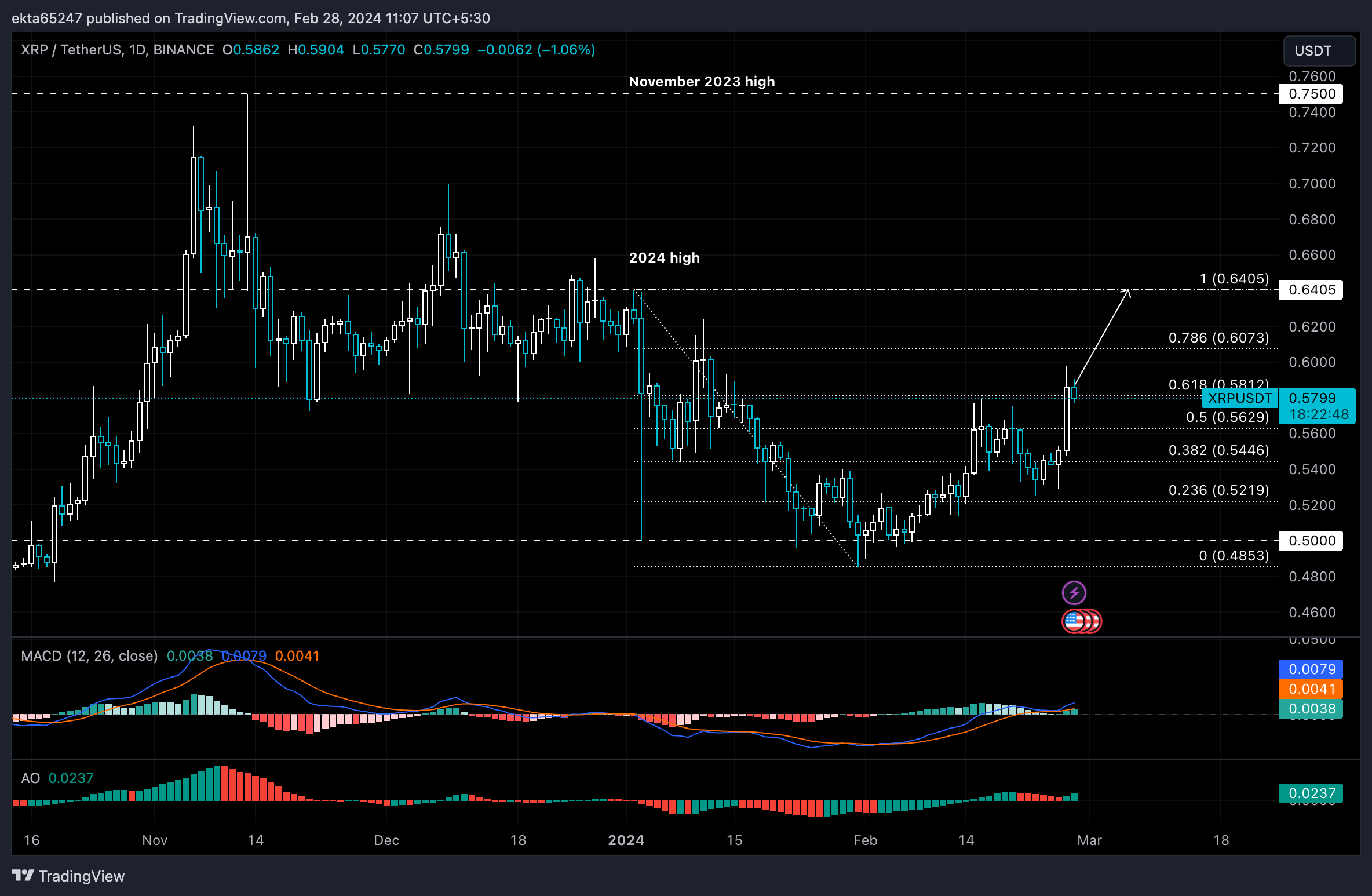XRP price rallies to $0.58 as SEC pushes for delay in Ripple lawsuit
- XRP price climbed to $0.58, inching closer to $0.60 target on Wednesday.
- The SEC has requested a change to the remedies briefing deadlines in its lawsuit against Ripple.
- Ripple’s deadline to file an opposition brief could be extended to April 22, 2024.
XRP price rallied on Wednesday in response to the Securities and Exchange Commission’s (SEC) push to delay the remedies briefing deadline in its lawsuit against the payment remittance firm.
The next key date for the SEC v. Ripple lawsuit, following the delay requested by the SEC is April 22, 2024.
Also read: XRP price wipes out losses, Ripple plans blockchain roadmap reveal for 2024
Daily Digest Market Movers: Ripple lawsuit faces further delay
- The SEC has revealed plans to delay the remedies briefing deadlines in its lawsuit against Ripple.
- Prior to the SEC’s request, Ripple had asked for an extension of the deadline for the discovery phase, in order to prepare the documents required by the regulator.
- The SEC’s push for delay implies that the regulator’s opening brief deadline will be extended to March 22, 2024 while Ripple’s deadline to file its opposition brief will be extended to April 22, 2024.
- The regulator’s deadline to file a reply to Ripple’s opposition brief will be extended to May 6, 2024.
- While the SEC’s bid for delay prolongs the legal battle between the payment remittance firm and the agency, it has likely catalyzed gains in XRPLedger’s native token, XRP.
- XRP price climbed on Wednesday, inching closer to its $0.60 target.
Technical Analysis: XRP price could hit $0.60 target in its uptrend
XRP price climbed to $0.58 on Wednesday. The altcoin is rallying closer to its $0.60 target. Bitcoin price sustained above the $57,000 level on Wednesday and the SEC bid to delay the remedies brief filing in the lawsuit against Ripple. These two factors are likely catalyzing XRP price gains.
XRP price is likely to rally towards its $0.6405 target, the 2024 high for the altcoin. In its uptrend XRP price faces resistance at the 78.6% Fibonacci retracement of the decline from the 2024 peak, at $0.6073. A successful break past this level could push XRP towards a new yearly high.
The Moving Average Convergence/ Divergence (MACD) indicator, and the Awesome Oscillator (AO) support XRP price gains and show that the uptrend is intact.

XRP/USDT 1-day chart
A daily candlestick close below the 50% retracement at $0.5629 could invalidate the bullish thesis for XRP and send the altcoin to support at the 38.2% Fibonacci retracement at $0.5446.
Ripple FAQs
What is Ripple?
Ripple is a payments company that specializes in cross-border remittance. The company does this by leveraging blockchain technology. RippleNet is a network used for payments transfer created by Ripple Labs Inc. and is open to financial institutions worldwide. The company also leverages the XRP token.
What is XRP?
XRP is the native token of the decentralized blockchain XRPLedger. The token is used by Ripple Labs to facilitate transactions on the XRPLedger, helping financial institutions transfer value in a borderless manner. XRP therefore facilitates trustless and instant payments on the XRPLedger chain, helping financial firms save on the cost of transacting worldwide.
What is XRPL?
XRPLedger is based on a distributed ledger technology and the blockchain using XRP to power transactions. The ledger is different from other blockchains as it has a built-in inflammatory protocol that helps fight spam and distributed denial-of-service (DDOS) attacks. The XRPL is maintained by a peer-to-peer network known as the global XRP Ledger community.
What blockchain technology does XRP use?
XRP uses the interledger standard. This is a blockchain protocol that aids payments across different networks. For instance, XRP’s blockchain can connect the ledgers of two or more banks. This effectively removes intermediaries and the need for centralization in the system. XRP acts as the native token of the XRPLedger blockchain engineered by Jed McCaleb, Arthur Britto and David Schwartz.

